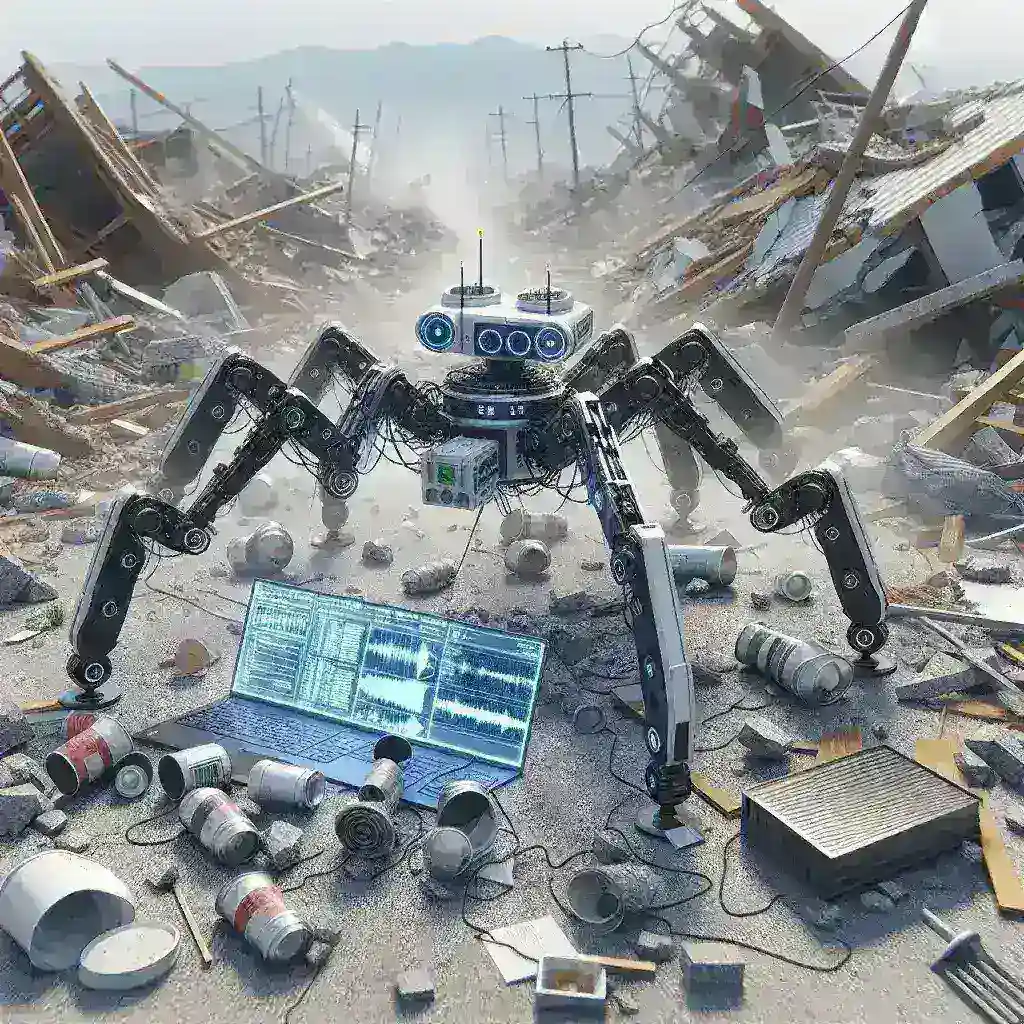Introduction
In recent years, the landscape of emergency response has witnessed significant advancements, particularly through the integration of robotics and artificial intelligence (AI). The ability to deploy AI-powered life detection sensors in disaster zones has dramatically improved the effectiveness of search and rescue missions. As natural disasters become increasingly severe due to climate change, understanding how these technologies work and their potential impact is more important than ever.
The Evolution of Robotics in Disaster Response
The use of robots in disaster scenarios is not a new concept. From the first remote-controlled devices used in bomb disposal to the sophisticated drones and autonomous vehicles of today, robotics has evolved significantly. In the aftermath of major disasters such as earthquakes, floods, and tsunamis, the challenge of locating survivors becomes paramount. Traditional methods can be slow, dangerous, and often ineffective in reaching inaccessible areas. This is where robotics shines.
Historical Context
- Early Developments: The initial applications of robotics in disaster zones began in the late 20th century, with remote-controlled vehicles aiding in bomb disposal and hazardous material management.
- Post-9/11 Innovations: The 9/11 attacks spurred advancements in search and rescue robotics, leading to the development of robots capable of navigating debris and performing reconnaissance.
- Contemporary Usage: Today, robots equipped with AI-powered sensors are deployed to assess situations, locate victims, and even deliver supplies in environments hazardous to human rescuers.
How AI-Powered Life Detection Sensors Work
AI-powered life detection sensors leverage advanced technological frameworks that combine machine learning, computer vision, and real-time data analysis. These sensors can detect vital signs such as heartbeat, respiration, and body temperature through various methods.
Key Technologies Involved
- Infrared Sensors: These sensors can detect heat signatures, allowing robots to identify bodies even under rubble.
- Acoustic Sensors: Utilizing sound waves, these sensors can pick up faint noises, such as cries for help or the sounds of movement, aiding in locating survivors.
- Gas Sensors: These are designed to detect specific gases exhaled by humans, helping to identify areas where people might be trapped.
Real-World Applications
There are numerous instances where robotics and AI have been successfully implemented in disaster scenarios.
Case Study: The 2011 Tōhoku Earthquake
After the devastating earthquake and tsunami in Japan, various robotic systems were deployed. Drones equipped with cameras scoured the affected areas, while ground robots equipped with life detection sensors navigated through collapsed buildings, searching for survivors.
Case Study: Hurricane Harvey
During Hurricane Harvey in 2017, various organizations utilized drones to survey flooded regions. These aircraft provided real-time data to emergency responders while AI-powered robots searched homes and buildings for trapped individuals.
Benefits of Using Robotics in Disaster Zones
The integration of robotics into disaster response offers several advantages:
- Increased Efficiency: Robots can cover large areas quickly, providing crucial information faster than human rescuers could.
- Enhanced Safety: Deploying robots reduces the risk to human lives, as they can operate in dangerous environments where traditional rescue teams may be at risk.
- Data Collection: Robots can gather vital information about the conditions on the ground, helping to inform future response efforts and improve overall strategy.
Challenges and Limitations
Despite the numerous benefits, there are also challenges associated with deploying robots in disaster zones.
Technical Limitations
Robots require reliable power sources and communication networks, which may be compromised in disaster-stricken areas. Additionally, the accuracy of AI algorithms is dependent on the quality of the data they are trained on, which can vary significantly between environments.
Ethical Considerations
The use of advanced robotics in life detection raises ethical questions regarding privacy, data security, and the potential for job displacement among traditional rescue workers.
The Future of Robotics in Disaster Response
The future of robotics in disaster response is promising. As technology continues to advance, we can expect to see even more sophisticated robots capable of performing complex tasks in challenging environments.
Predictions for the Next Decade
- Enhanced Autonomy: Future robots will likely possess greater autonomous capabilities, enabling them to navigate and make decisions without human intervention.
- Improved AI Algorithms: Machine learning will lead to more accurate life detection, allowing for faster and more effective responses in emergencies.
- Interoperability: Future robotics systems will likely be designed to work seamlessly with existing emergency response frameworks, enhancing overall efficiency.
Conclusion
Robotics equipped with AI-powered life detection sensors are reshaping the landscape of disaster response. Their ability to quickly and effectively locate survivors in challenging environments holds immense promise for improving outcomes in emergency situations. While challenges remain, the continuous evolution of technology and innovative applications in robotics will surely enhance our capabilities in the face of disaster. The collaboration between humans and machines will become increasingly crucial as we navigate the complexities of future emergencies.

